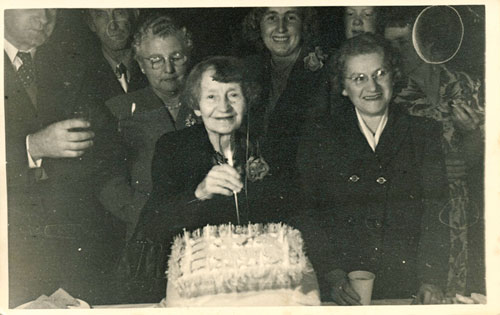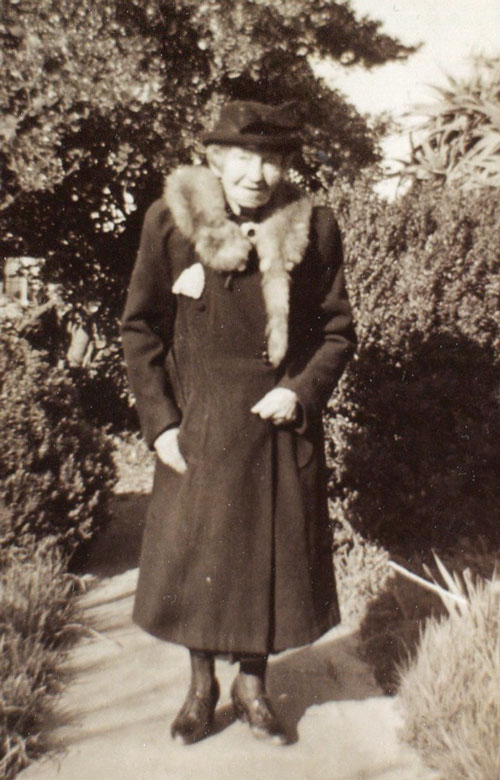The sound of the shop bell jolted Ada from a rare moment of reverie. She felt the cool breeze blowing off the bay and down the hallway as she walked towards the shopfront. Standing just inside the doorway was a man she hadn’t seen before.
Neatly dressed in working-class attire, he didn’t portray the image of the typical door-to-door salesman. Definitely not a local, she thought to herself, and it doesn’t look like he’s here for fruit and vegetables either. With a beaming smile the man handed her a small magazine, titled Australasian Signs of the Times. A quick glance at the cover gave her the impression the content was religious in nature.
Being a woman of faith, she accepted the gift from the stranger. Life was not easy for Ada and she thought she would enjoy some time reading about spiritual things, although finding that time might not prove easy for her. She placed the magazine on the kitchen table for her later attention.
A woman of diminutive stature, Ada had left her native England at a young age, bound for Melbourne and the opportunities it promised. Like thousands of other immigrants in the late 1880s, she wanted to experience the second-largest city in the British Empire and make a new life for herself. There, she had met and married Peder Halten, a Norwegian seaman who had decided to make Melbourne his home port. He was a complicated man who had decided to anglicise himself, becoming Peter Holton after he arrived in Melbourne. Peter and Ada went on to have seven children over the next 12 years.
Due to Peter’s work as a seaman, he would regularly travel away from the family for months and sometimes years at a time. Wiring funds to support the family from the various ports he visited proved unreliable, so he set up a business at the family home in Middle Park, Melbourne. They sold fruit, vegetables, wood and coal to the local neighbourhood. Because Peter spent so much time at sea, Ada became a part-time single mother, juggling the responsibility of raising a family mostly alone and running the family business to make ends meet. During the times Peter was home from the sea, his heavy drinking habit ensured that her workload remained demanding. The economic downturn of the mid-1890s only added to her challenges.
Ada’s visit from the man with the magazine was no chance encounter. This man was a member of the Windsor Seventh-day Adventist church, located about four kilometres from her home. Over the preceding 12 months, members of the Windsor church had put forth a concerted effort to share as much literature as possible, utilising Signs and other tracts in their work. As a result, many people across the south of Melbourne had the opportunity to discover more about God and His love for them.
In the early 1900s, Australasian Signs of the Times was a registered newspaper published by the Seventh-day Adventist Church. It contained articles on a variety of topics, ranging from current events at local and worldwide levels, scriptural and prophetic interpretation, church news, health and family life, children’s interests, and even a short classifieds section.

Ada thoroughly enjoyed what she read in Signs of the Times. Before long, the man returned with another issue, and this time it was accompanied with an invitation to a tent meeting which was soon to be held in a neighbouring suburb. Although Ada didn’t attend the tent meeting straight away, she continued to read Signs and the things she learned convinced her of the importance, and the blessing, of the seventh-day Sabbath; a day set aside by God for rest from work and for spending time with Him each week.
Ada decided to attend the tent meeting and learned more about what the Bible teaches on a wide variety of topics. This experience challenged her understanding of what it meant to be a follower of Jesus. Ada had been baptised as an infant into the Anglican faith and was a regular attender of her local church, but her conviction about Sabbath and her desire to follow Jesus’ example of being baptised by immersion changed her life.
Ada decided to publicly declare her wish to follow God’s will for her life and was baptised on April 12, 1905, by Pastor JH Woods at the Windsor Seventh-day Adventist church.
Ada was actively involved in her church community and became a foundation member of the newly formed East Prahran Seventh-day Adventist church, following the merger of the Windsor and Malvern churches in 1936. Her daughter and grandchildren also became foundation members of the East Prahran church at this time.

Tiny Nan, as Ada is known to those of us descended from her, instilled a love for Jesus and a determination to persevere through challenges in her children and grandchildren. She is remembered as a kind-hearted, patient woman who went the extra mile to support her children and grandchildren. Ada lived a long life, passing to her rest in February 1953, aged 87. She had also passed on a habit of reading Signs magazine, with her daughter, Halma, known to be a lifelong reader of Signs.
My earliest recollection of Signs was at my grandparents’ home, flicking through the pages and finding articles of interest. My grandparents were most likely the source of the Signs magazines that often made their way to my family’s home, being read by myself and a number of my siblings. Like everyone who follows Jesus, my journey with Him has included many different experiences and interactions, some of which were intergenerational in nature. I’m very thankful for the unknown person who shared that first Signs magazine with my great-great-grandmother.
Today, around 120 years later, some of Ada’s descendants still enjoy reading Signs magazine.
Toby Clare is a Seventh-day Adventist pastor, outdoors enthusiast and tinkerer with old cars. He writes from Wodonga, Victoria.






